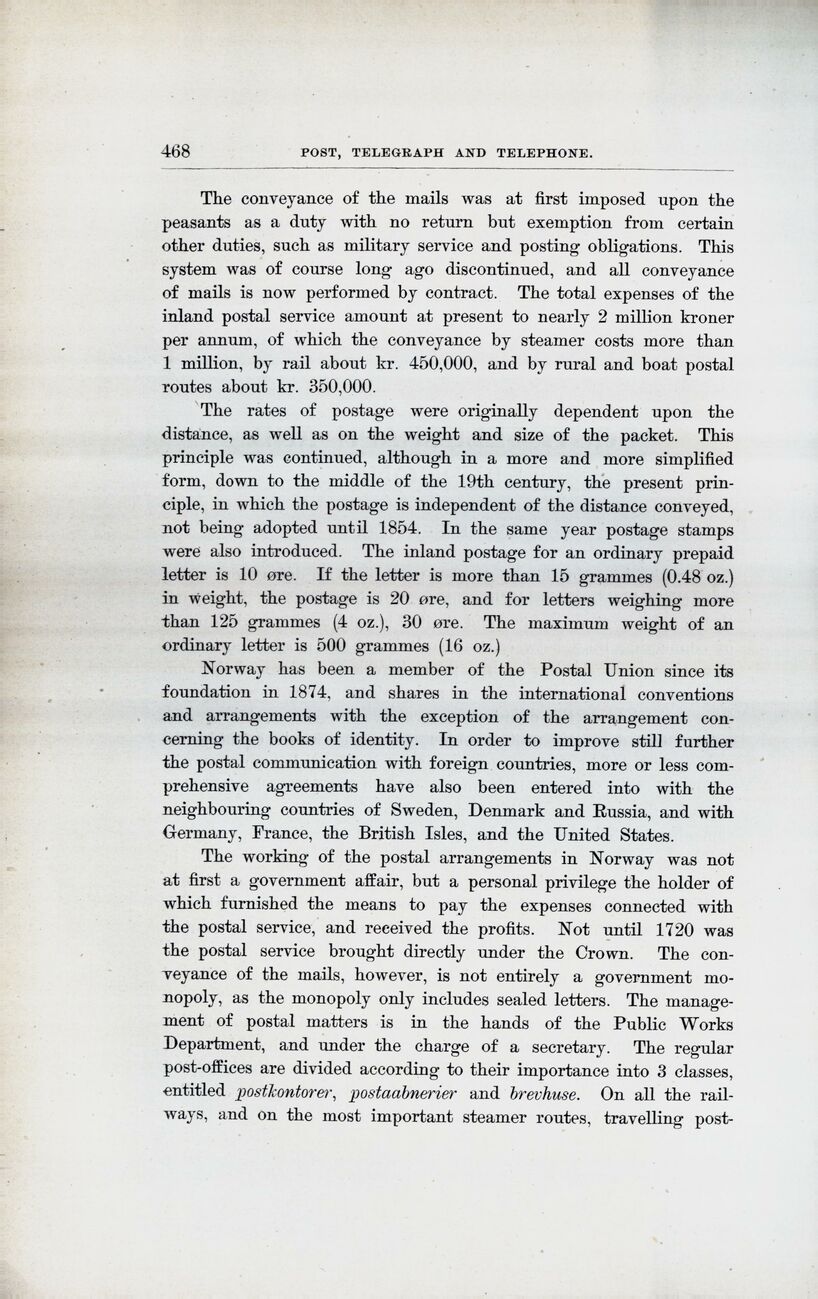
Full resolution (JPEG) - On this page / på denna sida - Post, Telegraph and Telephone, by Bernh. Andersen, Andr. M. Hansen and J. T. Sommerschild

<< prev. page << föreg. sida << >> nästa sida >> next page >>
Below is the raw OCR text
from the above scanned image.
Do you see an error? Proofread the page now!
Här nedan syns maskintolkade texten från faksimilbilden ovan.
Ser du något fel? Korrekturläs sidan nu!
This page has been proofread at least once.
(diff)
(history)
Denna sida har korrekturlästs minst en gång.
(skillnad)
(historik)
The conveyance of the mails was at first imposed upon the
peasants as a duty with no return but exemption from certain
other duties, such as military service and posting obligations. This
system was of course long ago discontinued, and all conveyance
of mails is now performed by contract. The total expenses of the
inland postal service amount at present to nearly 2 million kroner
per annum, of which the conveyance by steamer costs more than
1 million, by rail about kr. 450,000, and by rural and boat postal
routes about kr. 350,000.
The rates of postage were originally dependent upon the
distance, as well as on the weight and size of the packet. This
principle was continued, although in a more and more simplified
form, down to the middle of the 19th century, the present
principle, in which the postage is independent of the distance conveyed,
not being adopted until 1854. In the same year postage stamps
were also introduced. The inland postage for an ordinary prepaid
letter is 10 øre. If the letter is more than 15 grammes (0.48 oz.)
in weight, the postage is 20 øre, and for letters weighing more
than 125 grammes (4 oz.), 30 øre. The maximum weight of an
ordinary letter is 500 grammes (16 oz.)
Norway has been a member of the Postal Union since its
foundation in 1874, and shares in the international conventions
and arrangements with the exception of the arrangement
concerning the books of identity. In order to improve still further
the postal communication with foreign countries, more or less
comprehensive agreements have also been entered into with the
neighbouring countries of Sweden, Denmark and Russia, and with
Germany, France, the British Isles, and the United States.
The working of the postal arrangements in Norway was not
at first a government affair, but a personal privilege the holder of
which furnished the means to pay the expenses connected with
the postal service, and received the profits. Not until 1720 was
the postal service brought directly under the Crown. The
conveyance of the mails, however, is not entirely a government
monopoly, as the monopoly only includes sealed letters. The
management of postal matters is in the hands of the Public Works
Department, and under the charge of a secretary. The regular
post-offices are divided according to their importance into 3 classes,
entitled postkontorer, postaabnerier and brevhuse. On all the
railways, and on the most important steamer routes, travelling
<< prev. page << föreg. sida << >> nästa sida >> next page >>